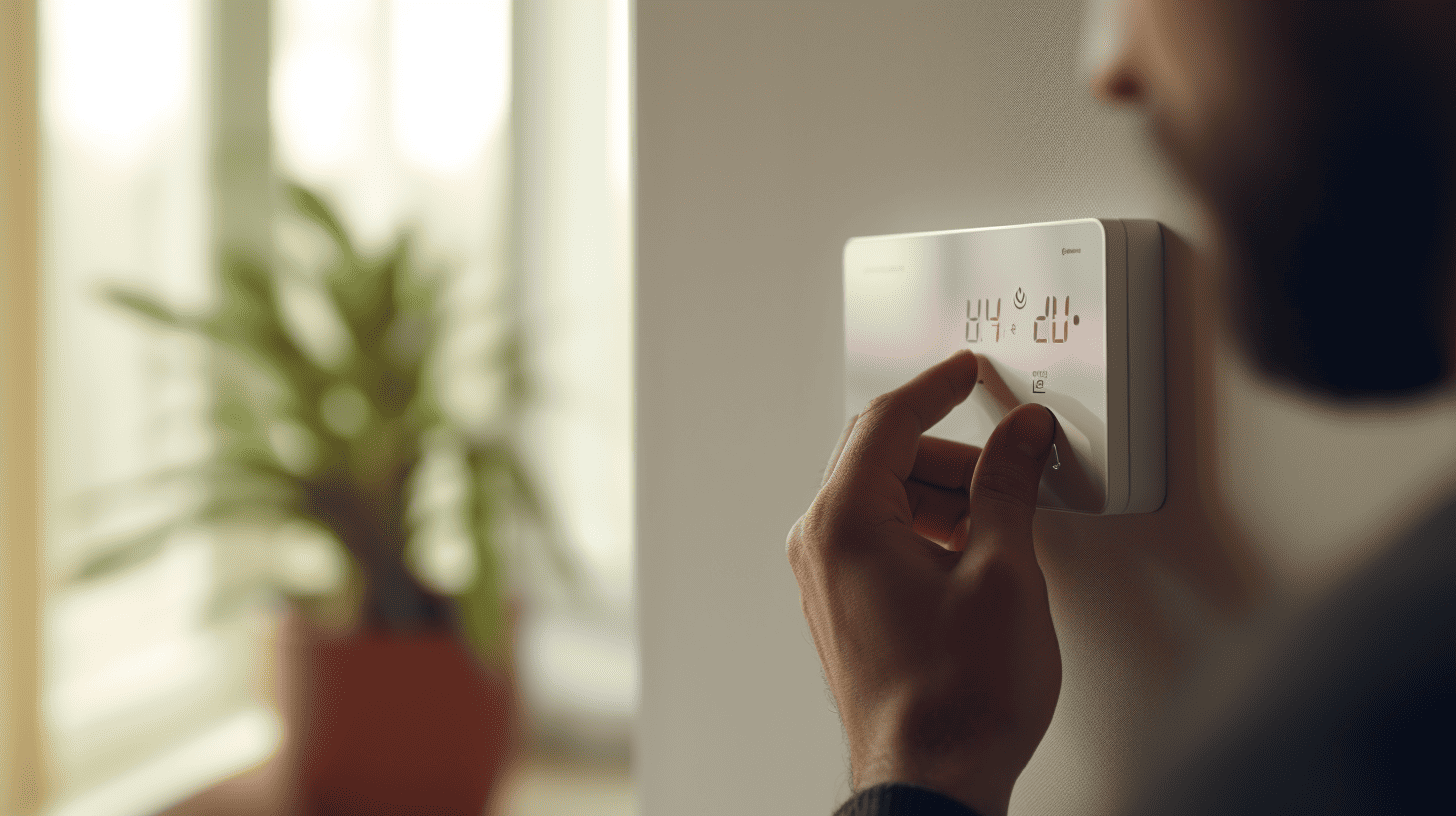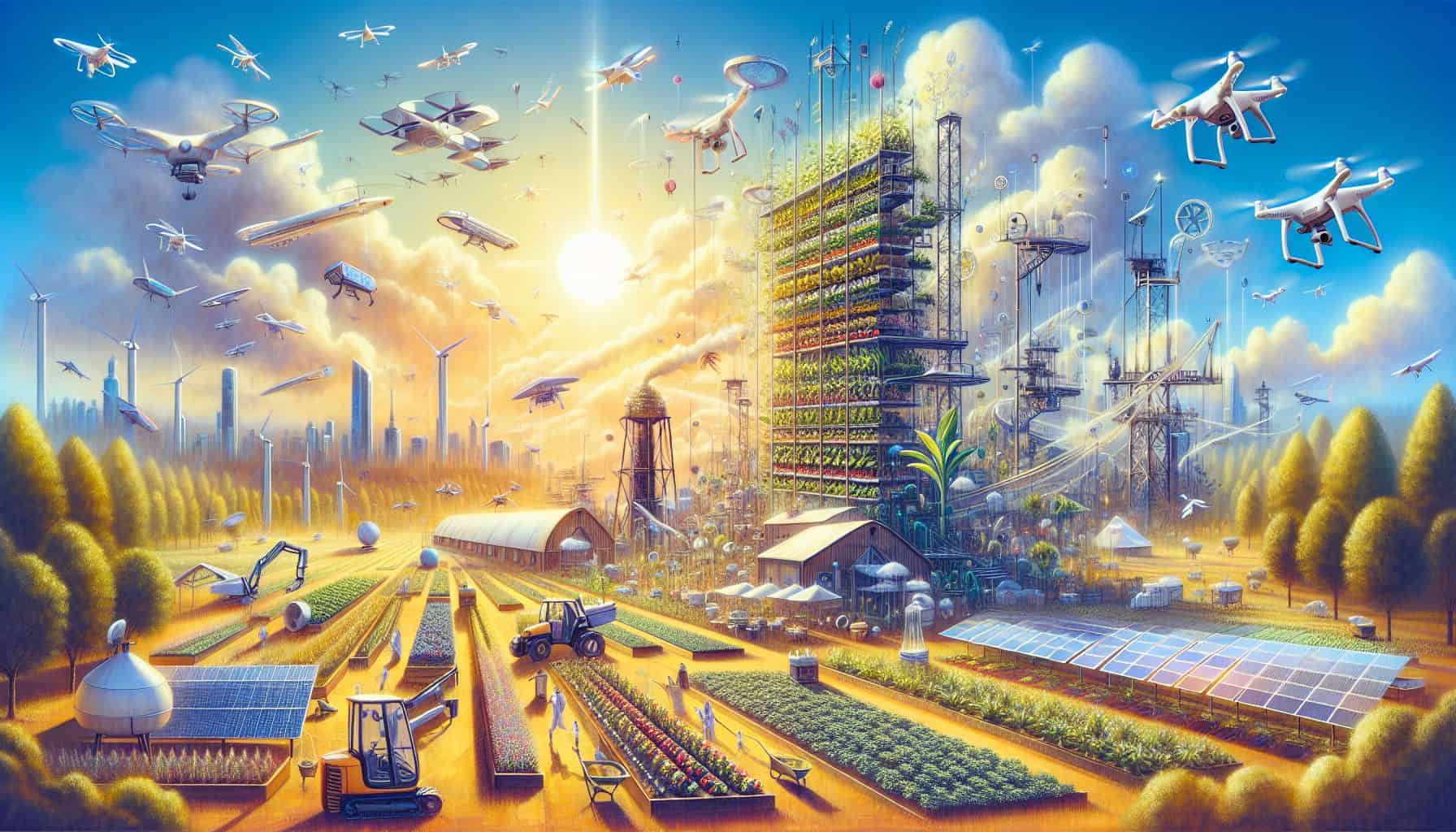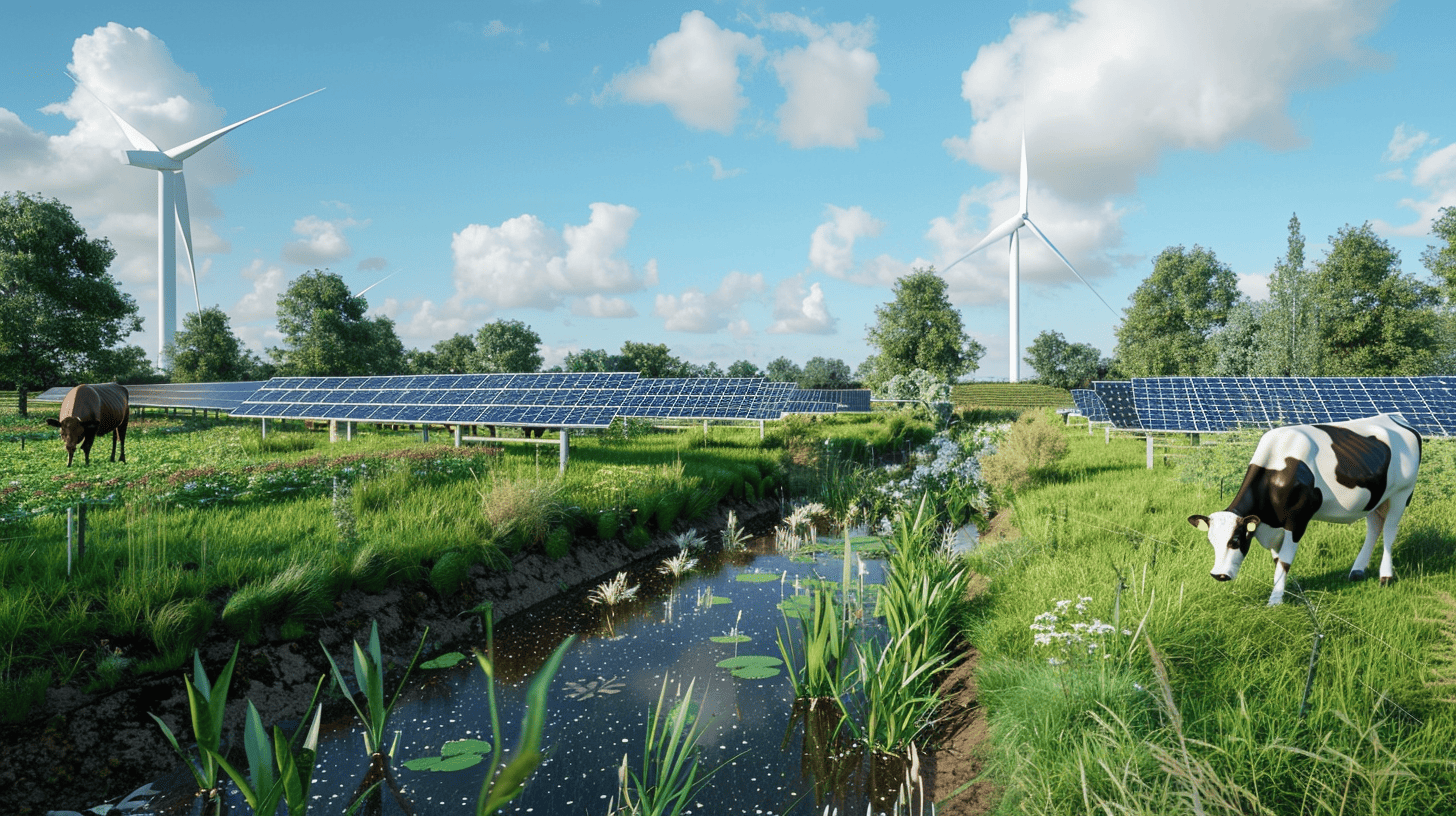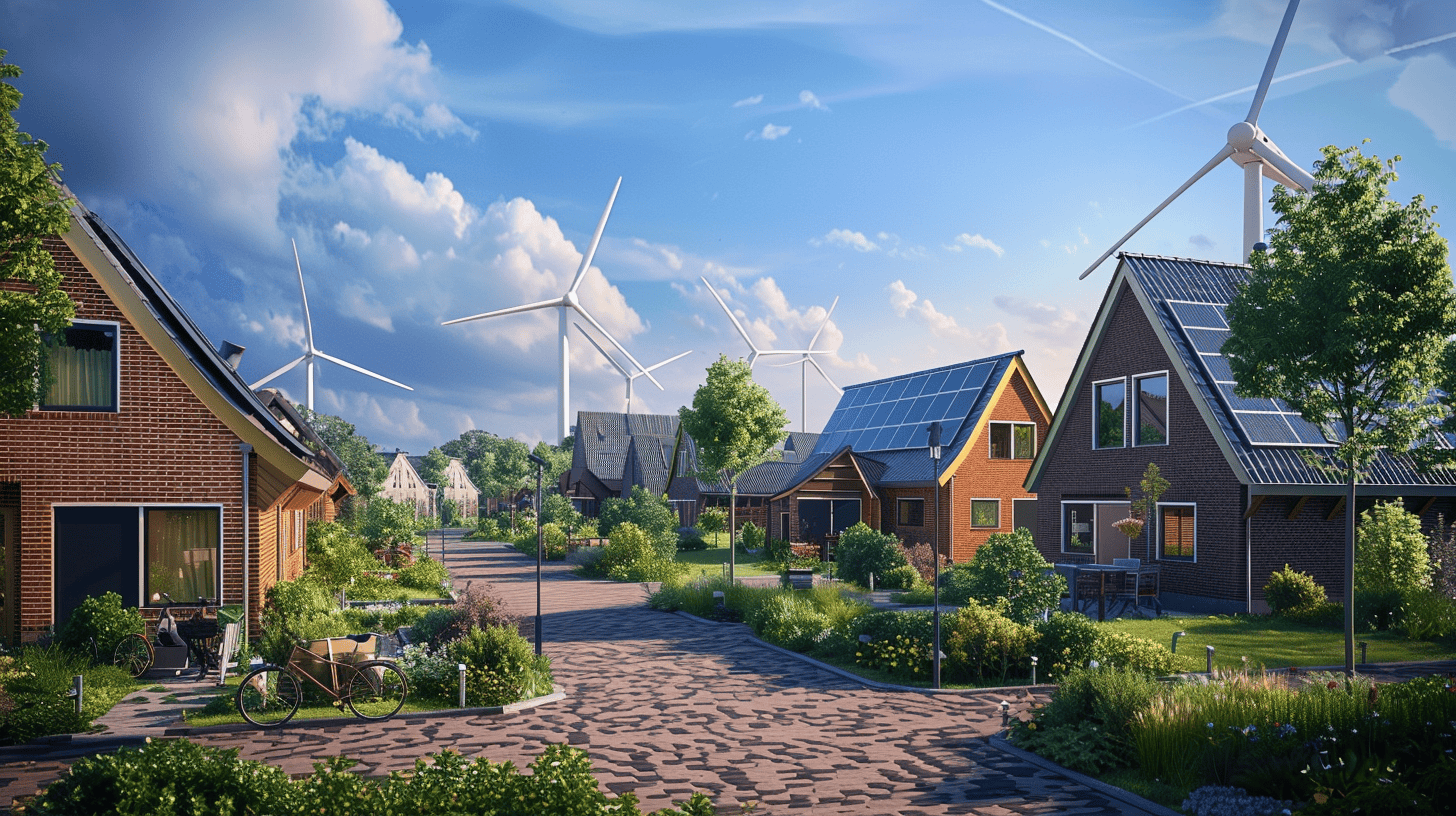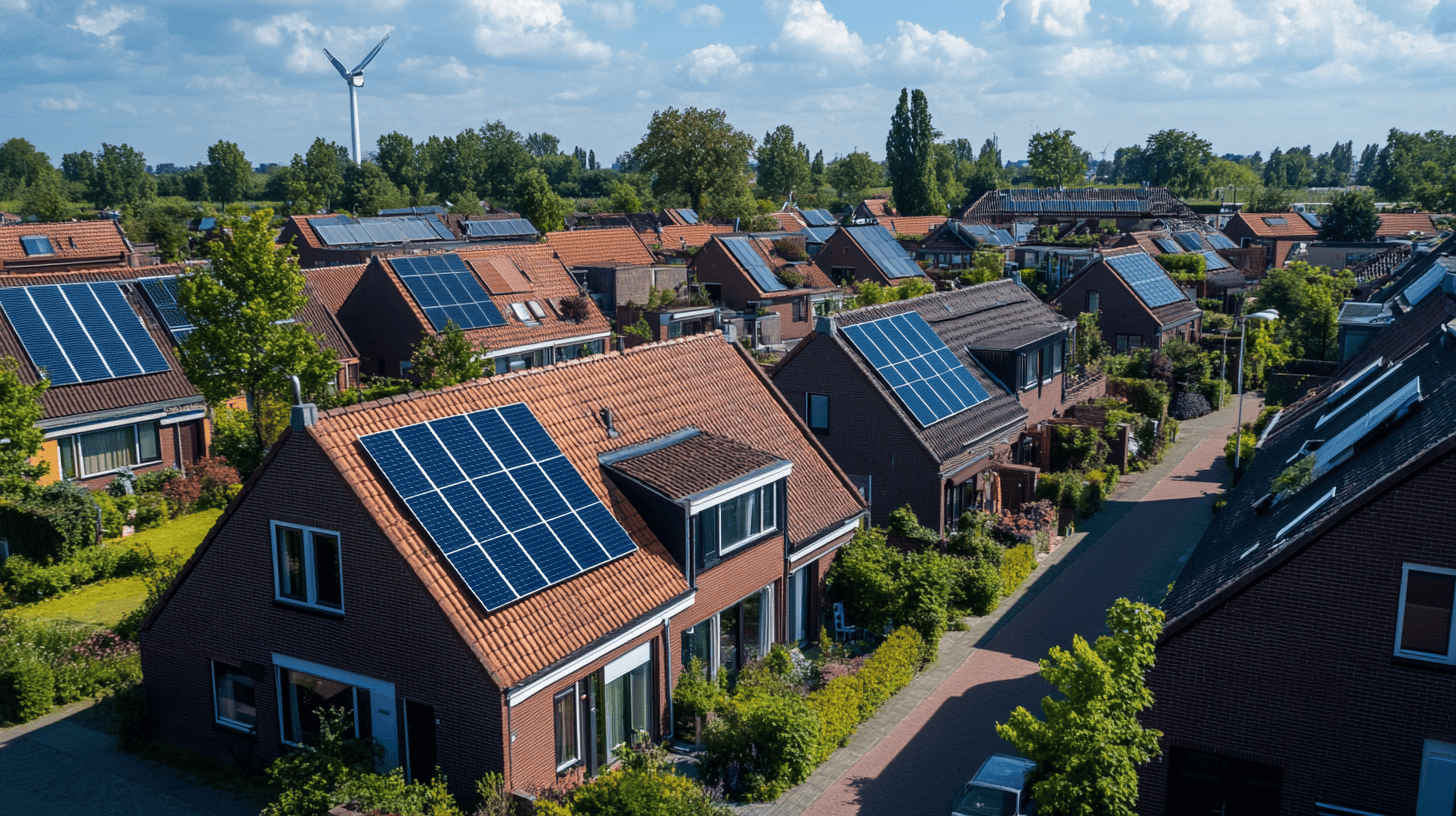
We should all be self-sufficient by 2050. With that idea in mind, Simone and Arend Koekkoek have launched Campus Almkerk. They bought a secluded farm in 2016 and completely rebuilt it. No gas connections anymore, instead solar panels on the roof. It is a place where people can go for advice on sustainable building, housing and agriculture. There are also a number of companies housed there who are working on these issues. 2blueconomy, for instance. A company that supplies energy-saving products for the home, such as a shower that collects heat from shower water and uses it elsewhere in a house. And Pixelfarming, where customers digitally lease agricultural crops. Each ‘pixel’ patch measures 10 by 10 centimeters. People can choose what they want to grow and then design their own garden. No need to sow, harvest and keep track of the land yourself, a robot does all of that. From time to time you even get sent photos of how your crop is doing.
Old ways on the way out
“We believe that current farming methods are on the way out. Farmers are more concerned about which crop yields the most per hectare of land. Yet today’s monoculture is depleting the soil,” says Simone Koekkoek. Her husband adds to this: “Then there are all those other steps in the supply chain before anything ends up on a plate.” The Koekkoek couple are aiming to remove these steps by delivering directly to consumers and allowing them to choose for themselves what they want to grow. Pixelfarming does not use any pesticides and customers get the full harvest. Including all the products and by-products that are not commonly used in the industry.
“Spinach flowers, for example. A restaurant that we supply hardly uses them. When I arrived there once to deliver some spinach that had flowered, they were really enthusiastic. ‘Oh, we’re going to fry those flowers!’ they said immediately. It’s good for the sake of creativity, and it makes people to think about what’s available,” Simone explains.
According to her, the demands of the industry have made us too used to seeing vegetables look a certain way. Beets are between 80 and 110 grams, everything outside of that can’t be found in supermarkets.” While that same restaurant is really delighted with tiny-sized beets. We have forgotten where vegetables come from. This is how we aim to get people to think more consciously about it all.”
Invention is not innovation
Arend believes that technology is used in agriculture in the wrong way: “We have been able to grow crops for a very long time, there’s nothing new about that. Every time I invent a better or faster piece of machinery that can harvest more efficiently, I don’t call it an innovation. It only becomes that when we start using these new technologies to do things in a completely different way.”
According to him, demand-driven agriculture is one such system innovation. “This allows you to use agricultural land much more efficiently. You are able to grow local produce. And you only grow what people actually need. This has a much smaller impact on the environment.”
“You often hear that the agricultural sector needs to make more use of data and that this data needs to be shared. I am in favor of this as long as it is done in the right way. I think it is very important that farmers find out in the first place what the real added value of data is for them. Just forwarding data streams is pointless,” says Koekkoek. Simone adds to what he said: “It’s a shame that farmers only use these drones or satellite images for determining when and where they should use fertilizer. They only do something with that data once a year that way. Surely a lot more could be gleaned from that?”
Hunting snails with a robot
Koekkoek also believes that agricultural machinery should have many more different uses. He compares it to the very first IBM PCs: “Before those computers, companies had to take their entire bookkeeping to an accountant in order to have them audited. With the advent of computers, they were able to do this themselves. But it also meant that they were able to dispense with typewriters too. They just put a floppy disc in and then the device delivered whatever they needed right there and then. That’s what’s lacking in agriculture at the moment.”
Pixelfarming’s autonomous agricultural robot is trying to perform these multiple tasks. The robot has a battery of sensors. And it has special heads that can be used in several ways. “You can use it to sow, harvest and also track and measure the land. Without the need for separate machines. We are able to design these in consultation with farmers, even when they have specific requirements.”
“You can even play games with our robot too,” laughs Koekkoek. Students who were working on a project about the agriculture of the future developed a game where players used the robot to deal with snails or weeds. ” This sort of thing just kind of happens here. So, that’s how you could look after a crop while playing a game. How cool is that! We need this kind of experimentation so we can view agriculture in a different way.”
Air filter for more pigs?
He has his doubts when it comes to the farmers who in the past few weeks have dragged their tractors out of their barns and driven en masse to The Hague (or their provincial town hall). “I don’t want to lump farmers all together. There are also farmers who do think about how they will leave the planet for the next generation,” says Koekkoek. “But the fact that something has to change has been as clear as a bell for twenty years now. Many farmers have ignored this. They were busy scaling up and increasing their profits. Pig farmers who buy a subsidized air filter for some more pigs – that’s not really a solution, is it?”
The couple believes that it may not be a problem at all if unsustainable agricultural practices were cleaned up. “The farmers who have been working on sustainability for a long time, have grown far less rapidly and have not made enough money. But they do keep an eye on the future of the planet. You can give these other groups money for sustainability projects, but does that change anything? It is not a choice, but a necessity. Let them feel it, maybe they’ll become more creative then. We also turned off the gas supply from one day to the next, so you have to find another way.”



